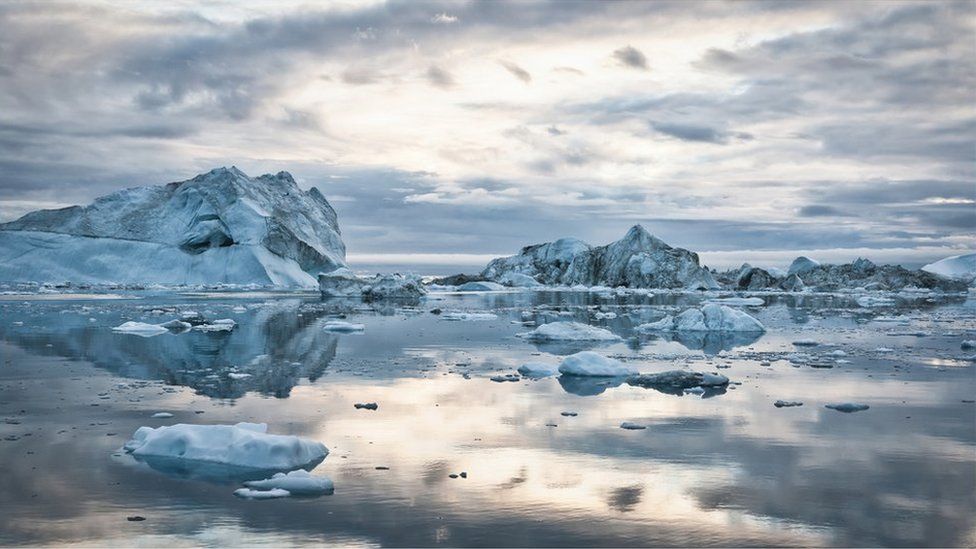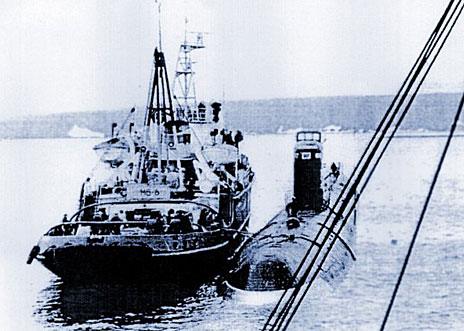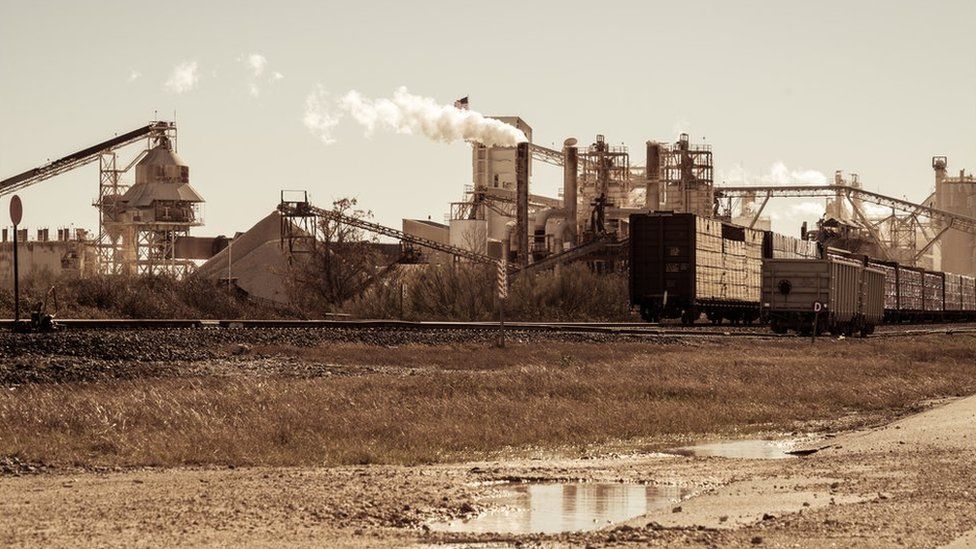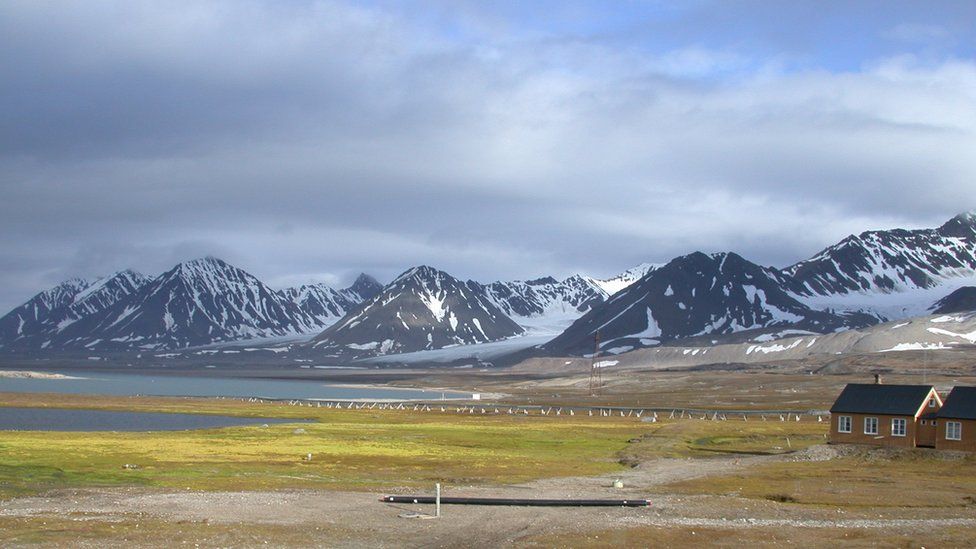BBC
Published2 days ago


Some of the nine million square feet of Arctic ice is more than a million years old
A rapidly warming Arctic could cause the spread of nuclear waste, undiscovered viruses and antibiotic resistant bacteria, a report has found.
It said potential radioactive waste from Cold War nuclear submarines and reactors and damage from mining could be released as the ice melts.
The nine million square miles of Artic dates to about a million years old.
Co-author Dr Arwyn Edwards from Aberystwyth University said much of the Arctic is still unknown.
Writing in Nature Climate Change, Dr Edwards co-authored report with academics from universities in the United States and NASA's Jet Propulsion Laboratory in Southern California.
The Arctic houses a diverse range of chemical compounds whether through natural processes, accidents or deliberate storage.
Nuclear waste, viruses and chemicals
Thawing permafrost, or permanently frozen land, has widely been seen as a contributor to greenhouse gas emissions as massive stores of Arctic soil carbon are released to the atmosphere as carbon dioxide and methane, as well as causing abrupt change to the landscape.
However, the research found the implications are more widespread and less understood - with potential for the release of nuclear waste and radiation, unknown viruses and other chemicals of concern.

A rapidly warming Arctic could cause the spread of nuclear waste, undiscovered viruses and antibiotic resistant bacteria, a report has found.
It said potential radioactive waste from Cold War nuclear submarines and reactors and damage from mining could be released as the ice melts.
The nine million square miles of Artic dates to about a million years old.
Co-author Dr Arwyn Edwards from Aberystwyth University said much of the Arctic is still unknown.
Writing in Nature Climate Change, Dr Edwards co-authored report with academics from universities in the United States and NASA's Jet Propulsion Laboratory in Southern California.
The Arctic houses a diverse range of chemical compounds whether through natural processes, accidents or deliberate storage.
Nuclear waste, viruses and chemicals
Thawing permafrost, or permanently frozen land, has widely been seen as a contributor to greenhouse gas emissions as massive stores of Arctic soil carbon are released to the atmosphere as carbon dioxide and methane, as well as causing abrupt change to the landscape.
However, the research found the implications are more widespread and less understood - with potential for the release of nuclear waste and radiation, unknown viruses and other chemicals of concern.

The Soviet K-27 submarine was sunk in the Kara Sea in 1981 after a fatal nuclear leak

Between 1955 and 1990, the Soviet Union conducted 130 nuclear weapons tests in the atmosphere and near surface ocean of the Novaya Zemlya archipelago off the coast of north-west Russia.
The tests used 224 separate explosive devices, releasing about 265 megatons of nuclear energy and more than 100 decommissioned nuclear submarines were scuttled in the nearby Kara and Barents seas.
Despite a Russian government launching a strategic clean-up plan, the review notes the area has tested highly for the radioactive substances caesium and plutonium, between undersea sediment, vegetation and ice sheets.

Between 1955 and 1990, the Soviet Union conducted 130 nuclear weapons tests in the atmosphere and near surface ocean of the Novaya Zemlya archipelago off the coast of north-west Russia.
The tests used 224 separate explosive devices, releasing about 265 megatons of nuclear energy and more than 100 decommissioned nuclear submarines were scuttled in the nearby Kara and Barents seas.
Despite a Russian government launching a strategic clean-up plan, the review notes the area has tested highly for the radioactive substances caesium and plutonium, between undersea sediment, vegetation and ice sheets.
The United States' Camp Century nuclear-powered under-ice research facility in Greenland also produced considerable nuclear and diesel waste.
Decommissioned in 1967, waste was left in the accumulating ice, which faces a longer term threat from changes to the Greenland Ice Sheet.
The 1968 Thule bomber crash in the same country also dispersed huge amounts of plutonium on the Greenland ice sheet.
 I
IThe Arctic abrupt thawing has been seen as a contributor of greenhouse gas emissions as stores of Arctic soil carbon are released to the atmosphere
Antibiotic resistant bacteria?
Deep permafrost of more than three metres is one of the few environments on Earth that has not been exposed to modern antibiotics.
More than 100 diverse microorganisms in Siberian deep permafrost have been found to be antibiotic resistant and as permafrost thaws, there is potential for these to mix with meltwater and create new antibiotic-resistant strains of existing bacteria.
Where the layers of permafrost are exposed suddenly and haphazardly, increasing the opportunity for the release of multiple years of species simultaneously.
What about fossil fuels?

By-products of fossil fuels have been introduced into permafrost environments since the beginning of the Industrial Revolution
As well as by-products of fossil fuels being in the environments since the start of the Industrial Revolution, the Arctic also contained natural metal deposits, including arsenic, mercury and nickel.
The mining of these for decades has caused huge contamination from waste material across tens of millions of hectares, according to the report.
High concentration pollutants and chemicals previously stored within the permafrost could be released back into atmosphere as it melts and increased water flows mean it can disperse widely, damaging animal and bird species as well as entering the human food chain.
More than 1,000 settlements, whether resource extraction, military and scientific projects, have been created on permafrost during the last 70 years and that, coupled with the local populace, increases the likelihood of accidental contact or release.
The report said despite its findings, it is still poorly understood and largely unquantified and further in-depth research in the area is vital to gain further insight into the risks.

The permafrost is melting "abruptly", says the report
Dr Arwyn Edwards, from Aberystwyth University, said: "Changes in the Arctic's climate and ecology will influence every part of the planet as it feeds carbon back to the atmosphere and raises sea levels.
"This review identifies how other risks can arise from the warming Arctic. It has long been a deep-freezer for a range of harmful things, not just greenhouse gases.
"We need to understand more about the fate of these harmful microbes and pollutants and nuclear materials to properly understand the threats they may pose.
"It is imperative demonstrable action is taken at next month's COP26 summit as these findings should concern anybody. As well as fulfilling the targets of the Paris Agreement and reducing the increase in the global climate temperature to 1.5 Celsius, there needs to be a strong and immediate commitment to funding research in this area.
"What should worry us is how much we have still yet to learn about the Arctic, how important it is to all of our futures and why it is worth protecting."
No comments:
Post a Comment